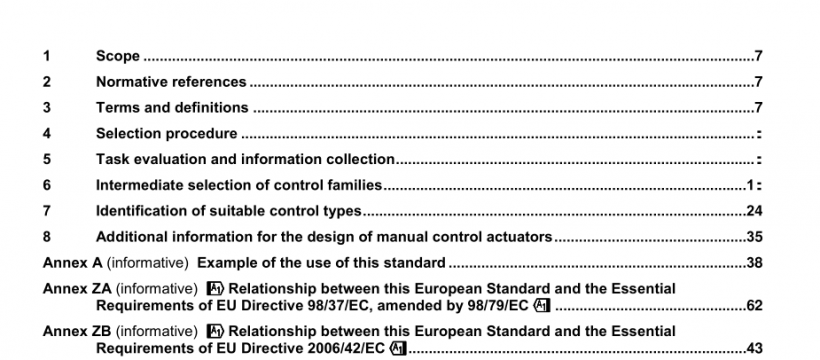AS NZS 4024.1903:2014 pdf free download
AS NZS 4024.1903:2014 pdf free download.Safety of machinery
5.5.2 Grip characteristic p) part of hand applying force:
The part of the hand, whether one finger, several fingers or the whole hand, that is used to operate the control actuator. Where earlier specification or consideration of postural constraints restricts the part of the hand that can apply the force then the possible parts of the hand should be entered on the recording form.
5.5.3 Grip characteristic q) method of applying force:
Whether the force is applied normal to the surface of the manual control actuator or tangential to the surface. The former method relies primarily on the shape of the actuator and the finger or hand interlocking, whereas the latter method relies primarily on the friction between the actuator surface and the skin. Where earlier specification or consideration of postural constraints restricts the method of applying force then either normal or tangential should be entered on the recording form.
5.6 Recording the information
The form in figure 2 is given as a means of recording the above information. It is intended that this recording form should be completed as far as is possible at this stage. It is useful to record those requirements which are the most important or critical or which cannot be changed, the remarks column can be used for this purpose.
6 Intermediate selection of control families
In order to proceed with the selection process the information collated on the recording form is used as follows.
Figures 5 and 6 allow the selection of control families for linear and rotary control actuators respectively. The first column provides a number for each row, L1…L41 and R1…R33. The next three columns denote possible combinations of accuracy, speed and force using the classification scheme from clause 5. The fifth column denotes those axes and directions of movement for which the combinations of accuracy, speed and force in the previous three columns can be met. The final two columns in the tables denote control families, designated by numbers, which meet the criteria in each row. One column is used for discrete movement control actuators, the other continuous movement. Figure 6 has a further column which allows selection of control families which require more than a half turn.
If earlier design specification has stipulated whether a linear or a rotary control actuator should be used then it will only be necessary to use the appropriate figure 5 or 6.
AS NZS 4024.1903:2014 pdf free download
